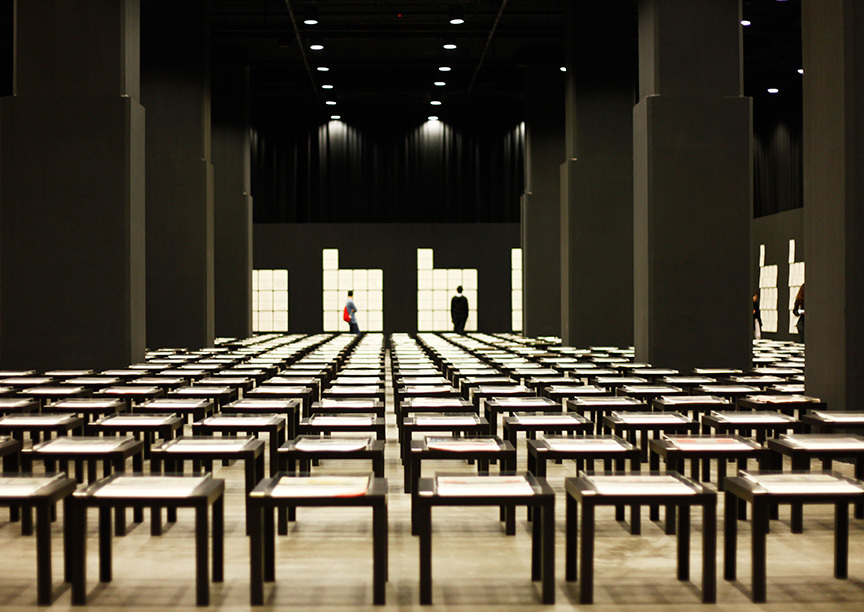
R
E
V N
E
X
T
Although pop-up reminders and smartphone schedules have replaced hanging wall calendars in the digital age, there was nothing nostalgic or sentimental about those by Chinese artist Song Dong. Covering the capacious, black-columned ArtisTree hall, over 400 wire-bound pages depicted every month of the artist’s life for the past 36 years. While the project traced China’s staggered emergence from the Cultural Revolution, politics never overwhelmed the frank, intimate portrait of life in Beijing.
The pencil illustrations—clean, restrained and rendered with becoming earnestness—portray events torn from the headlines and diaristic memories. For example, a bottle of Coca-Cola available for the first time in December 1979 marks China’s opening up to the West as well as the artist’s first mouthful of the product (it turned out to be a Chinese fake). Across the hall, Song recalls a television screen flashing footage of a single figure staring down a tank (an image from the 1989 Tiananmen Square protest, which was not a Western fake, as the Chinese government claimed).
Given the centrality of painting to the artist’s life, the calendars also serve as a history of art in the country. But rather than presenting a dry procession of theories and “isms,” Song’s calendars construct a story about art’s unstoppable, emotional and personal necessity. As a young boy in 1980, he saw Luo Zhongli’s famous painting of a leather-faced farmer, Father (1980), which made such an impression that it seemed even larger than the vast icon of Mao Zedong hanging in Tiananmen Square. Song later fully awakens to Western contemporary art, recalling when Christo and Jeanne-Claude wrapped the Reichstag in July 1995. In an accompanying caption, he reflected, “The day when we can do artwork at Tiananmen, we will be truly free.”
Though far from the Gate of Heavenly Peace, the commercial cornucopia of Hong Kong provided space for this public art project. On a January evening this year, more than 400 volunteers each edited a single, reproduced page from the artist’s calendars to reflect their own memories of the respective month. Schoolchildren drew smiley-faces and bright patterns over events they were not old enough to remember, while older participants conjured up forgotten history with iPhones. One volunteer boldly erased Song’s calendar illustration altogether, and another smeared red lipstick kisses across a panel. The amended calendars, which were displayed in the center of ArtisTree on low black desks, attested to a spirited, if not altogether seriously reflective, congregation.
Nevertheless, the event lent itself eagerly to praise: as stirring advocacy for freedom of expression; as an admirable community-building exercise; and as an alternative, postmodernist tour of China’s past—constructed of hundreds of various microhistories. “If more people were willing to write their histories,” Song plainly proselytized in one caption, “there would be richer archives.” But somehow a room of numerous unattributed doodles did not feel like an alternative history, let alone an accessible one. The total effect of the amended calendars was, in the end, somewhat incoherent; sometimes, in representing history, the micro can be too small, and the populous, too many.
As a participant, one felt afflicted by the forceful, guiding hand of public programming that shepherded the throngs of volunteers through long lines and patrolled the rows of low black desks demanding quiet as sponsors thanked other sponsors ad infinitum. The project, unfortunately, became a slick, public exercise and vain celebration of Hong Kong’s bureaucratic institutions—Asia Art Archive and M+, which respectively hosted Song as a resident and coordinated the event—rather than a testament to the redemptive power of contemporary art.
Noelle Bodick is assistant editor of ArtAsiaPacific and is based in Hong Kong.



